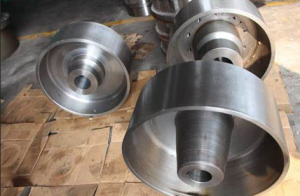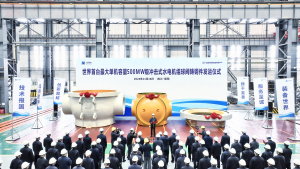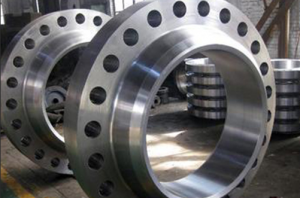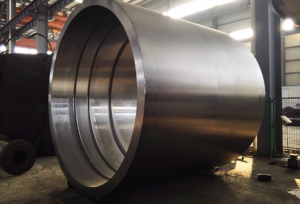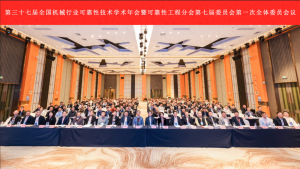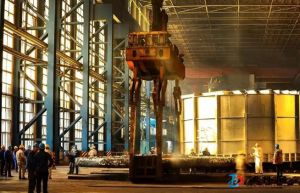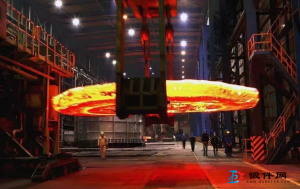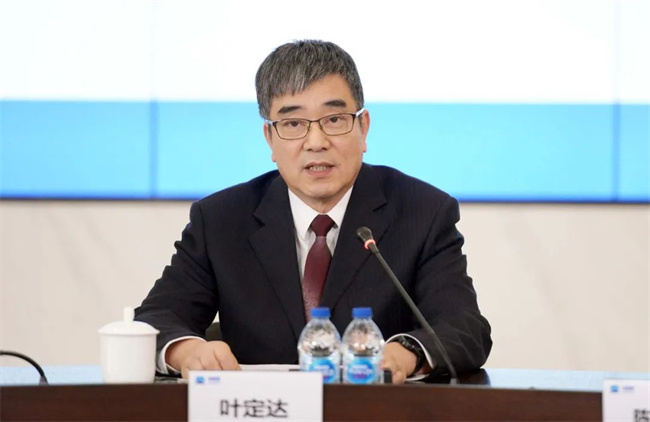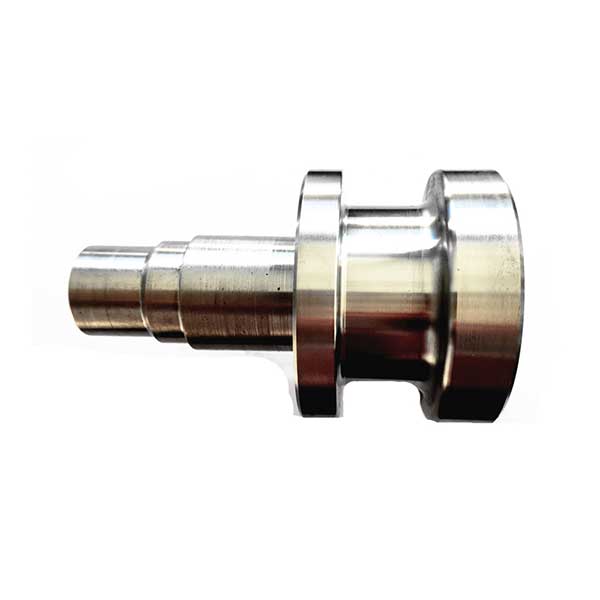The Central Economic Work Conference clearly pointed out that we should adhere to the principle of stability and seek progress while maintaining stability, stressed the strengthening of various policy coordination and cooperation, and made a series of deployments such as “accelerating the construction of a modern industrial system”, “focusing on strengthening weak links in the industrial chain” and “vigorously developing the digital economy”.
The year 2023 is the first year to fully implement the spirit of the Party’s 20 National Congress, and it is of great significance to do economic work well. How to promote steady industrial growth? How to enhance the core competitiveness of manufacturing industry? Minister of Industry and Information Technology Jin Zhuanglong recently accepted an interview with Xinhua News Agency
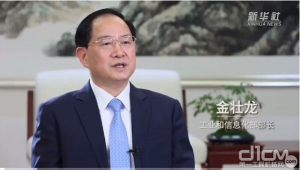
We have the confidence, conditions and ability to promote the steady recovery of the industrial economy
Q: What was the performance of the industrial economy in the past year? How to promote stable industrial growth in 2023?
A: Over the past year, we have worked with various regions and departments to actively respond to the impact of unexpected factors, implement a package of policies to stabilize the economy, and promptly introduce a series of measures to boost the industrial economy. From January to November 2022, China’s industrial added value above designated size increased by 3.8% year-on-year, continuing to play the role of “ballast” for industrial stability of the macroeconomic market.
It is undeniable that the operation of the industrial economy still faces difficulties and challenges, but it should be noted that the advantages of a complete industrial system and a strong domestic market are prominent. In 2023, the combination of optimized epidemic prevention and control measures, stock policies and incremental policies will greatly boost market confidence. We have the confidence, conditions and ability to promote the steady recovery of the industrial economy.
The Ministry of Industry and Information Technology will increase efforts to stabilize growth, strengthen the coordination and cooperation of various policies, and focus on four aspects of work:
First, we strengthened the supply and implementation of policies to stabilize growth. Strengthen the coordination of departments and the linkage of ministries and provinces, implement the policies and follow-up measures that have been issued, strengthen the monitoring and scheduling of industrial economic operation, situation research and judgment, and policy reserves, and introduce more policies and measures in a timely manner.
Second, focus on key industries and regions to stabilize the basic plate of industrial growth. For pillar industries such as machinery, petrochemicals, light industry, automobiles, and electronics, we will study and formulate measures to stabilize growth on a section-by-sector basis. We will create more new growth areas for emerging industries such as new energy, new materials, next-generation information technology, and high-end equipment. We will support the major industrial provinces in taking up the leading role, and support all regions in leveraging their respective strengths and achieving their growth targets.
Third, fully implement the “14th Five-Year Plan” series of plans to boost effective investment in manufacturing. For identified major projects, major projects, major projects, and major projects, start implementation as soon as possible to form a physical workload. We will support manufacturing enterprises to increase investment in high-end, intelligent, and green development, and strengthen service guarantees for major foreign-invested projects in the manufacturing industry.
Fourth, we will actively expand consumption and create new demand with high-quality supply. We will implement the project of new energy vehicles leading the way and developing a strong foundation, and carry out trials for access to intelligent and connected vehicles. We will further implement the “Increase variety, improve quality, and create brands” campaign, promote the movement of green smart home appliances and green building materials to the countryside, vigorously cultivate demonstration cities for information consumption, and promote the development of new technologies, new products, and new models.
Forging long boards, reinforcing short boards, strengthening foundations, and comprehensively upgrading the modernization level of the industrial system
Q: The Central Economic Work Conference emphasized speeding up the construction of a modern industrial system. What specific measures will the Ministry of Industry and Information Technology take?
A: To build a modern industrial system, the key lies in revitalizing the manufacturing industry. We will forge long boards, strengthen weak boards, strengthen the foundation, and comprehensively modernize the industrial system. We will focus on the following five areas:
First, we will improve the autonomy and controllability of key industrial chains. We will identify the weak links in key core technologies and components, carry out key core technology research projects, improve market mechanisms such as “revealing-list”, and take solid steps to strengthen chains and stabilize chains. We will pool high-quality resources to tackle key problems.
Second, we will deepen the reconstruction of the industrial base. Focusing on core basic components, core basic components, key basic materials, key basic software, advanced basic processes and industrial technology foundations, vigorously implementing industrial basic reconstruction projects, laying out a number of common industrial basic technology centers in key areas, and cultivating a number of national manufacturing innovation centers, and actively giving play to the role of key laboratories. Strive to break through a number of key urgently needed basic products.
Third, we will consolidate our leading position in competitive industries. We will accelerate the construction of new infrastructure such as 5G, deepen the integrated application of “5G+ Industrial Internet”, and promote the research and development of 6G technology. Strengthen the new energy automobile industry, comprehensively enhance the competitiveness of the photovoltaic industry, and promote the high-quality development of the shipbuilding industry.
Fourth, we will vigorously transform and upgrade traditional industries. Cultivate a group of leading enterprises with resource control and international competitiveness, vigorously promote technological transformation and equipment upgrading of enterprises, in-depth implementation of intelligent manufacturing projects, comprehensive implementation of green manufacturing, and forge new industrial competitive advantages.
Fifth, we will accelerate the cultivation and growth of emerging industries. We will accelerate the innovation and development of strategic emerging industries such as artificial intelligence, biofuturing, and the Internet of Things, implement special actions for the development of advanced manufacturing clusters, study and formulate action plans for future industrial development, and accelerate the planning and layout of future industries such as humanoid robots, meta-universe, and quantum technology.
We will step up rescue assistance to stabilize market expectations and boost business confidence
Q: In 2023, what new measures will be taken to help enterprises rescue, and how will expectations be stabilized and confidence strengthened?
A: In response to many unexpected factors, China promptly introduced a series of policy measures to relieve difficulties. With the support of various pro-enterprise policies, the majority of small and medium-sized enterprises have been constantly striving to overcome difficulties, showing strong resilience and vitality.
At present, the difficulties and challenges of the stable development of small and medium-sized enterprises are still relatively large, and the Ministry of Industry and Information Technology will further strengthen the policy of benefiting enterprises, the environment of enterprises, the service of enterprises, the innovation of enterprises, and the talent of enterprises, and make every effort to promote the high-quality development of small and medium-sized enterprises.
Specifically, it includes continuously optimizing the development environment, improving the regulations and policies system for small and medium-sized enterprises, continuously carrying out environmental assessment and comprehensive supervision of small and medium-sized enterprises development, and carrying out special actions to reduce the burden on enterprises. We will increase assistance and support, coordinate and promote the continuation and improvement of phased pro-business policies, and introduce a number of measures to help micro, small and medium-sized enterprises maintain steady growth, adjust their structure, and strengthen their capabilities. We will promote the development of specialized and specialized new enterprises, and strive to have more than 80,000 specialized and specialized new small and medium-sized enterprises and more than 10,000 “small giant” enterprises nationwide by the end of 2023. Build a high-quality and efficient service system, and improve the service system for small and medium-sized enterprises at the national, provincial, city and county levels; We will strengthen international exchanges and cooperation, build a number of cooperation zones for small and medium-sized enterprises, improve the overseas service system for small and medium-sized enterprises, and help them “go global”.
We will consolidate the foundation and expand applications, and accelerate the integration of the digital economy and the real economy
Q: What specific measures will the Ministry of Industry and Information Technology take to vigorously develop the digital economy?
A: The digital economy is an important engine driving China’s economic growth and an important advantage in building a modern industrial system. China has built the world’s largest and most technologically advanced network infrastructure, with 2.28 million 5G base stations and gigabit optical networks capable of covering 500 million households. The industrial Internet has been widely integrated into 45 national economic categories, and the role of the digital economy in empowering the real economy has become increasingly prominent.
In 2023, we will thoroughly implement the decisions and arrangements of the Party Central Committee and The State Council, focus on digital technology innovation breakthroughs and application expansion, and promote the deep integration of the digital economy and the real economy.
First, accelerate the construction of digital infrastructure. We will deepen the construction of 5G and gigabit optical networks, coordinate the construction of new infrastructure such as data centers and the industrial Internet, and accelerate the deployment and application of the Internet of vehicles. We will carry out the “Broadband Frontier” special action, and give strong support to the construction of “double gigabit” networks in areas with demand and conditions.
Second, we will promote the innovative development of the digital industry. Focus on key areas such as integrated circuits, 5G, and new displays, and improve the supply of basic hardware and software, core electronic components, key basic materials, and intelligent manufacturing equipment. We will study and formulate supporting policies to better leverage the role of data factors and build world-class digital industrial clusters.
Third, we will deepen industrial digital transformation. Carry out digital transformation actions in the manufacturing industry, promote the popularization of the industrial Internet to industrial parks, build a number of 5G fully connected factories, build a number of global leading smart factories and smart supply chains, and promote the scenario and standardization of small and medium-sized enterprises.
Fourth, we will strengthen network and data security. We will strengthen capacity building for security protection of network infrastructure, establish norms and standards for data security in the industrial and information technology fields, and enhance security capabilities in new convergence areas such as 5G, the industrial Internet, and the Internet of vehicles.
Fifth, improve the environment for the development of the digital economy. Innovate telecom market supervision, guide and urge the compliance development of platform enterprises, deepen the comprehensive management of the network environment such as preventing and cracking down on telecom network fraud, and comprehensively strengthen the protection of users’ rights and interests.
